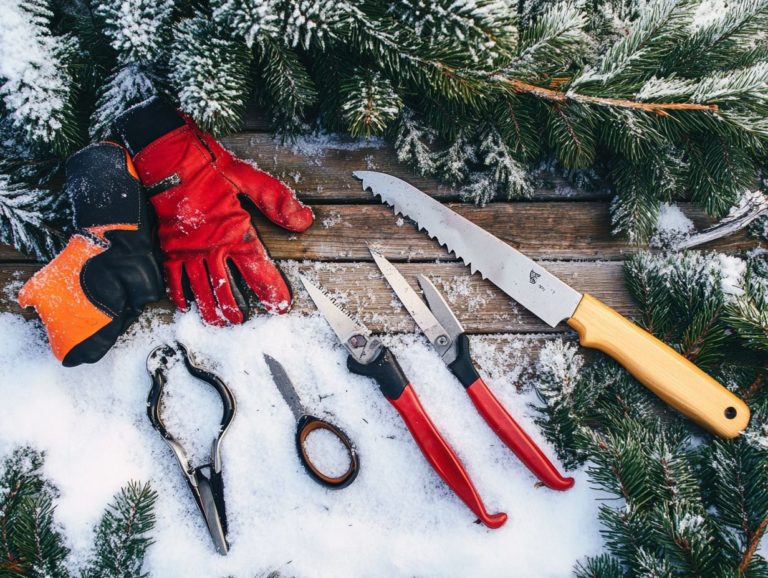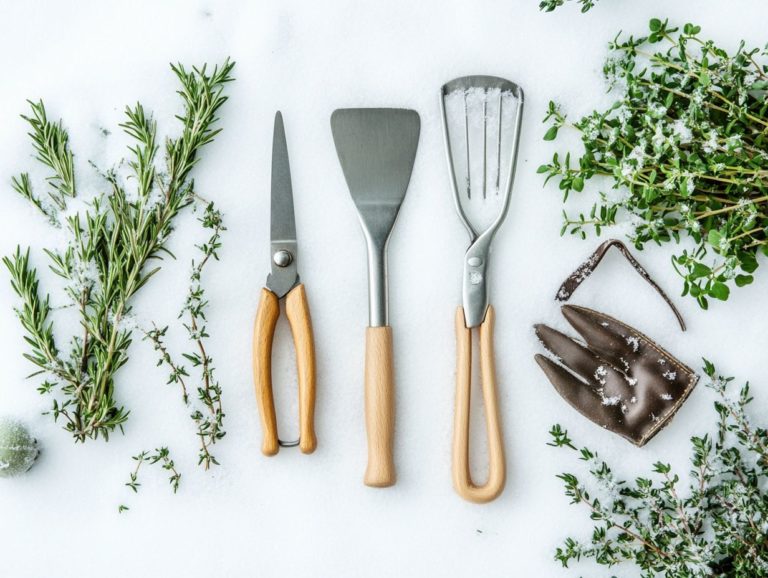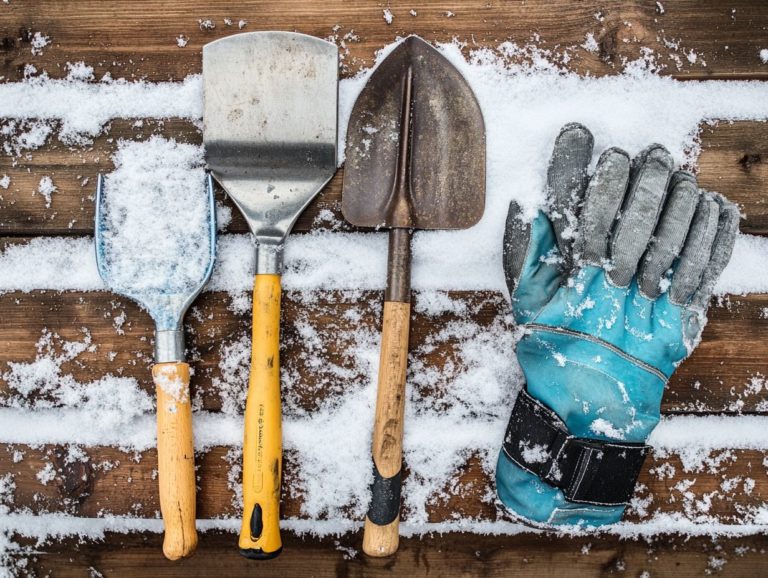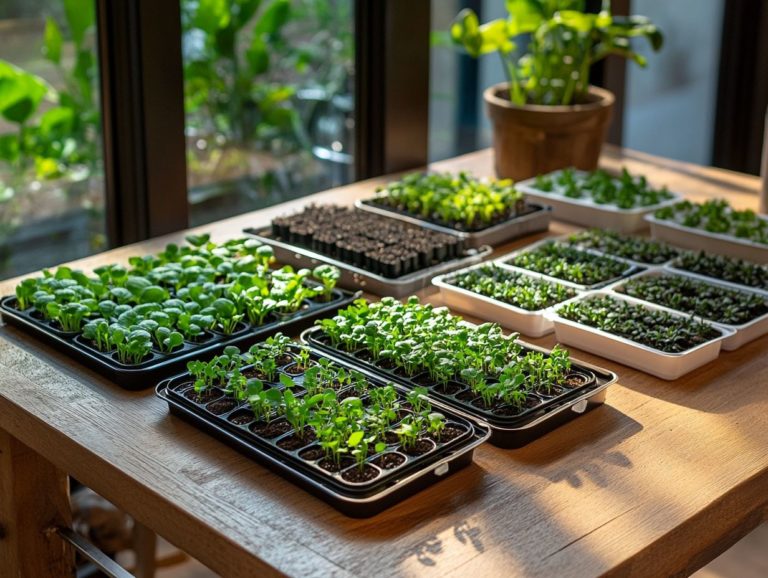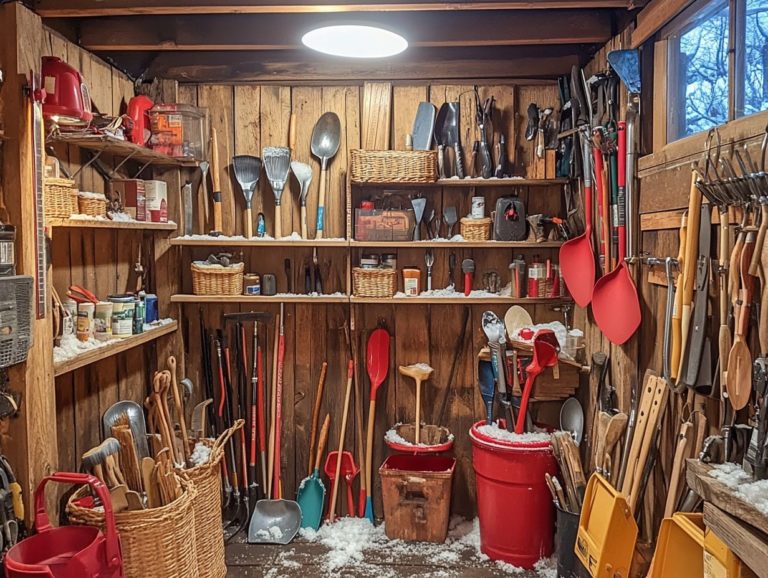Top 5 Accessories for Cold Climate Gardening
Gardening in cold climates, particularly in regions like Wyoming, is an exciting adventure, full of rewards and challenges! As temperatures dip, having the right tools and accessories is essential to keeping your garden thriving.
This article highlights the top five must-have items, from insulated gardening gloves to frost protection blankets, that can significantly enhance your cold climate gardening experience. You ll also discover the unique challenges posed by colder climates and learn how to prepare your garden effectively, including tips from local gardening experts. This article will also discuss additional accessories to enrich your gardening routine.
Whether you re a seasoned gardener or just beginning your journey with gardening tips, these tools will empower you to enjoy a flourishing garden, even in the chill of winter.
Contents
- Key Takeaways:
- 1. Insulated Gardening Gloves
- 2. Hand Warmers
- 3. Knee Pads
- 4. Insulated Watering Can
- 5. Frost Protection Blanket
- What Are the Challenges of Gardening in Cold Climates?
- Frequently Asked Questions
- What are the top 5 accessories for cold climate gardening?
- Why do I need insulated gloves for cold climate gardening?
- What type of winter hat should I wear while gardening in the cold?
- Why is a kneeling pad important for cold climate gardening?
- Do I really need a snow shovel for cold climate gardening?
- What is the benefit of having a greenhouse or cold frame for cold climate gardening?
Key Takeaways:
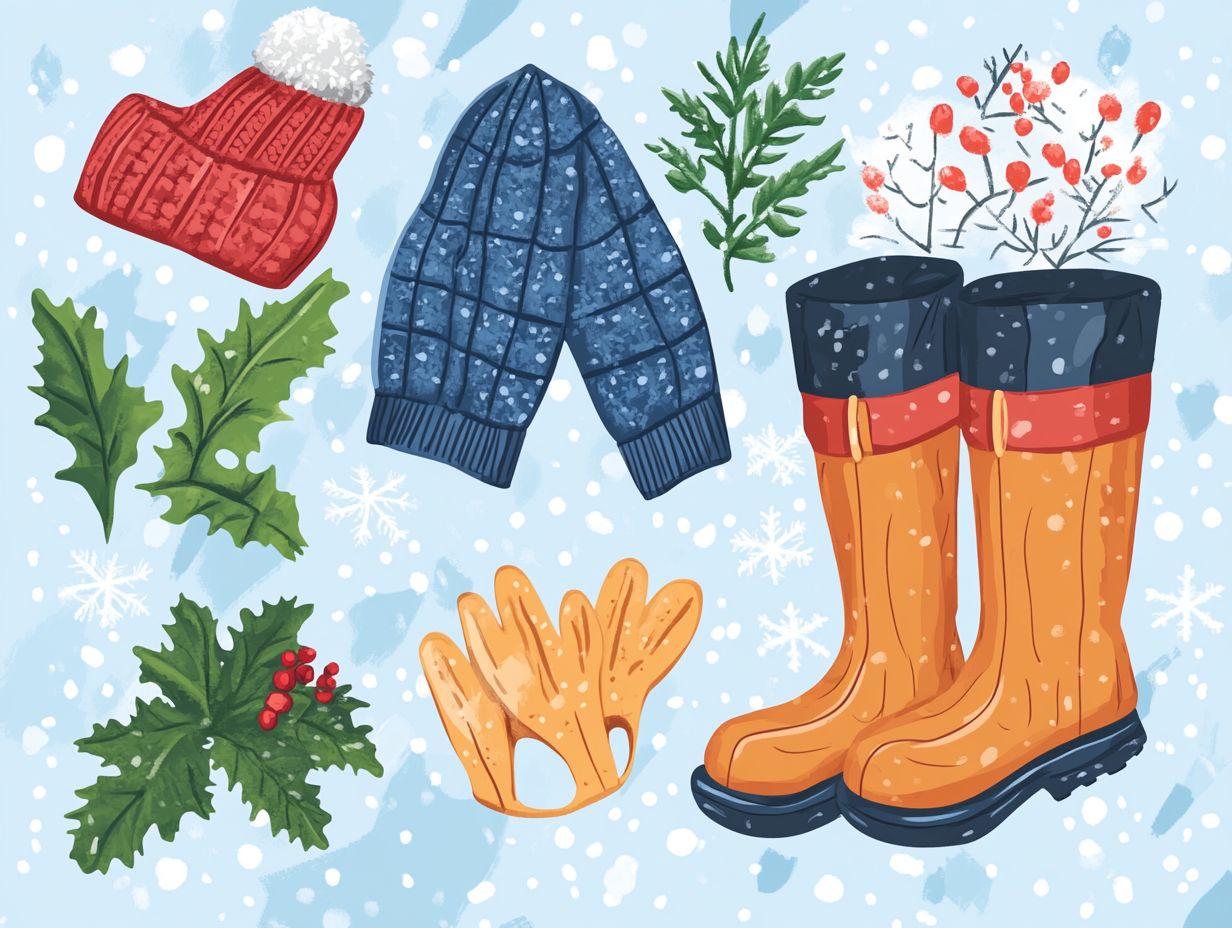
- Insulated gardening gloves are a must-have for protection against freezing temperatures and wet soil while tending to plants in cold climates.
- Hand warmers provide warmth and comfort to gardeners’ hands during long hours spent outdoors in chilly weather, making them ideal for tasks like seed starting and managing raised beds.
- Knee pads help prevent soreness and injury while working in the garden, especially in colder climates where the ground may be harder.
1. Insulated Gardening Gloves
Insulated gardening gloves are a must-have for anyone venturing into the realm of cold climate gardening, particularly in regions like Wyoming, where winter s chill can throw a wrench in your gardening plans and threaten plant health, especially for growing vegetables like kale and spinach.
These gloves not only keep your hands warm but also shield you from frostbite and other cold-related injuries, making them essential for tasks like garden maintenance and early spring planting.
Use insulated gloves as local gardening experts recommend. This will enhance your gardening experience.
When selecting the perfect insulated gloves, pay attention to the materials and insulation properties that optimize both comfort and functionality. For instance, waterproof outer layers are essential in preventing moisture from sneaking in, while Thinsulate a type of insulation that keeps you warm without being bulky delivers remarkable warmth without unnecessary bulk.
Fabrics like fleece or synthetic fibers provide excellent thermal insulation, ensuring your fingers remain agile even in frosty conditions.
For gardeners in Wyoming, where the cold can be particularly biting, these gloves can be beneficial for a variety of tasks such as:
- Pruning: Keeping plants healthy by removing dead or overgrown branches.
- Bulb planting: Ensuring that spring flowers bloom beautifully.
- Mulching: Protecting soil and plants during harsh weather.
It s crucial to find a snug fit and choose gloves that offer a good grip, allowing you to handle tools and plants with precision while minimizing fatigue and maximizing effectiveness during the colder months in your garden zone.
2. Hand Warmers
Hand warmers are essential companions for you as you navigate the challenges of cold climate gardening, especially in areas like Southeast Wyoming. They provide that much-needed warmth during chilly weather, transforming your gardening experience into something far more enjoyable.
These portable heat sources are especially beneficial for tasks like seed starting or managing raised beds in the colder months, helping to create microclimates for your plants.
By integrating hand warmers into your routine, you can elevate your gardening tips and techniques, ensuring effective outdoor gardening even during the frosty season and allowing you to extend your growing season.
Among the various hand warmers at your disposal, you’ll discover disposable, rechargeable, and even microwaveable options, each with its own unique advantages for different gardening scenarios. When gardening in Wyoming s crisp climate, employing hand warmers allows you to create a micro-environment that’s ideal for germination.
By combining gardening techniques such as layering mulch or using cold frames and hoop houses with these handy tools, you can significantly extend your growing season. These warmers keep your hands cozy and are vital for your plants survival in the cold!
Get your garden gear ready today and embrace the cold with confidence!
3. Knee Pads
Knee pads are an often overlooked yet essential accessory for outdoor gardening, especially when you re navigating the rugged terrain of Wyoming. The soil can be tough on your knees. Whether you’re planting heirloom seeds, weeding raised beds, or harvesting your prized crops, knee pads offer the comfort and protection you need. This allows you to work longer without discomfort. By integrating knee pads into your gardening routine, you can focus on planting and harvesting without being distracted by nagging knee pain.
There s a variety of knee pads available, each tailored for specific gardening tasks and made from materials like soft foam, gel, or even hard-shell plastics. Foam pads provide lightweight cushioning, which is perfect for quick tasks, while gel pads deliver superior comfort for marathon kneeling sessions.
Choose knee pads with waterproof and durable materials they’re designed to withstand moisture and rough surfaces. This is especially useful in Wyoming s diverse climates, particularly for gardening in winter. As you tend to your crops whether it s hardy root vegetables or resilient perennials these pads will allow you to move freely. This ensures your gardening experience stays enjoyable and pain-free.
4. Insulated Watering Can
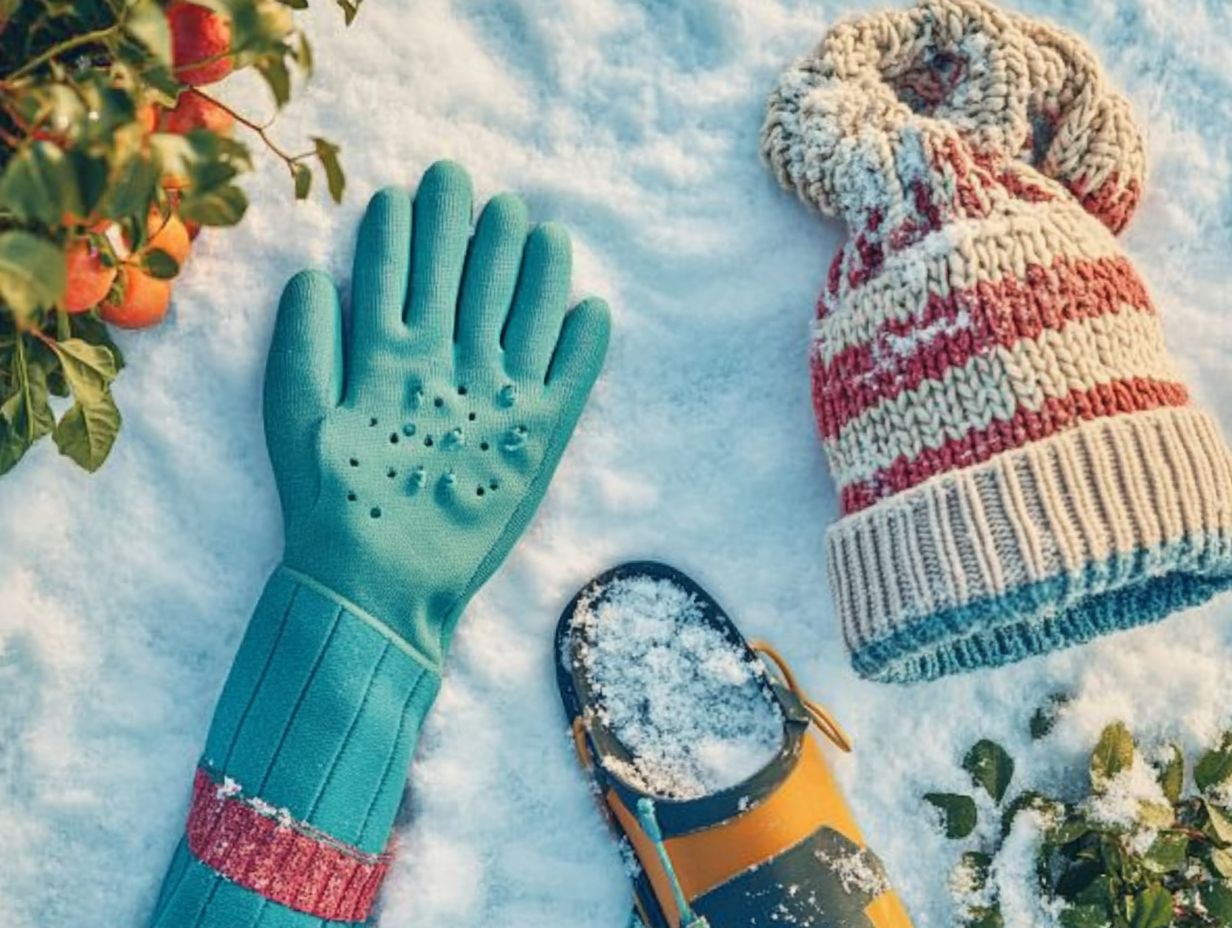
An insulated watering can is a game-changer for your gardening toolkit! It’s essential for anyone engaged in cold climate gardening, especially in areas like Wyoming where frost dates can significantly influence plant growth. This specialized can helps maintain a stable temperature for your plants. It prevents the sudden shocks that can arise from using regular watering cans filled with cold water, especially during early spring planting.
Using an insulated watering can helps ensure effective hydration and care for your plants, perfectly aligning with key gardening strategies for thriving in chilly conditions. It dramatically reduces the risk of frost damage, as it keeps water at a consistent temperature for extended periods.
When temperatures drop, the insulated design serves as a protective barrier, ensuring the water remains warm enough to nurture both delicate seedlings and established plants. During the colder months, particularly late fall and early spring, incorporating warm water from your insulated watering can fosters healthier root systems in your plants.
In summer, fill the can and let it sit in the shade for a few hours before using it. This simple step helps moderate the water’s temperature, further supporting your garden s well-being throughout the seasons.
5. Frost Protection Blanket
A frost protection blanket shields your plants from cold temperatures and is an essential asset for anyone engaged in winter gardening or using methods to extend the growing season, such as hoop houses and greenhouses. These blankets provide a layer of insulation that safeguards your delicate seedlings and crops think kale and spinach ensuring they thrive amid unpredictable winter temperatures.
By incorporating frost protection blankets into your gardening routine, you can secure a bountiful vegetable harvest and extend your growing season well beyond traditional frost dates. When selecting the right frost protection blanket, consider factors like weight, material, and the specific crops you intend to protect.
Lightweight fabrics are particularly beneficial for young plants, allowing air and moisture to flow through while still providing the warmth they need. Conversely, heavier, quilted materials are perfect for hardier crops like carrots and beets, especially during brutal cold snaps.
For optimal results, deploy these blankets in the late afternoon before an anticipated frost to capture warmth overnight. Don t forget to remove them on sunny days to avoid overheating your plants, safeguarding your vegetable harvest. Keeping a close eye on local weather patterns will help ensure you maximize the effectiveness of these protective measures. Don t wait until the last frost to protect your precious plants!
What Are the Challenges of Gardening in Cold Climates?
Gardening in cold climates presents unique challenges that require careful planning. In places like Wyoming, understanding the USDA Plant Hardiness Map is essential for successful planting.
Factors like limited growing seasons, fluctuating temperatures, and varying frost dates influence your choices in plant selection and growth.
This knowledge is vital for success. It ensures a fruitful vegetable harvest, especially with innovative gardening techniques.
Pay close attention to your area’s frost dates. Planting at the wrong time can be disastrous for delicate seedlings!
Start seeds indoors or use cold frames to extend your season. Mulching helps retain warmth and moisture, keeping your plants hydrated during chilly nights.
Plan staggered harvest schedules and use season extenders to maximize your yield. With these strategies, you can transform every garden bed into a thriving source of fresh produce!
How Can These Accessories Help with Cold Climate Gardening?
The right accessories are crucial for successful cold climate gardening, helping to tackle the top challenges in winter gardening. They provide practical solutions to the issues posed by frigid temperatures and short growing seasons.
Items like insulated gloves, hand warmers, and top soil test kits for cold-weather gardening are essential tools that can boost your gardening experience.
Insulated gloves keep your hands warm while providing a snug grip on tools. This improves your control as you work.
Hand warmers fit perfectly in your pockets, keeping you comfortable during frosty mornings. This helps you focus on your plants instead of the cold.
Frost protection blankets shield vulnerable seedlings from sudden cold snaps. They create a microclimate that encourages growth despite icy conditions.
These accessories form a protective shield against harsh weather, making it vital to know what tools are essential for cold-climate gardening. They turn cold climate gardening from a daunting challenge into a rewarding adventure!
What Are Some Other Helpful Accessories for Cold Climate Gardening?

Along with the essential accessories already mentioned, you’ll discover several other valuable tools that can significantly elevate your cold climate gardening experience, especially if you’re tending to your garden in Wyoming. Accessories like cold frames, hoop houses, and insulated watering cans act as effective season extenders. For more guidance, consider these top tips for planting in cold climates. They provide your plants with much-needed protection and warmth during those chilly months.
With these tools, you can optimize your growing potential. This ensures a more bountiful vegetable harvest despite the climatic challenges.
Want to keep your plants cozy? Try using a garden cloche! This mini-greenhouse traps heat and keeps frost at bay while shielding individual plants from biting winds. You can easily find these at local garden centers or online stores, making them perfect for safeguarding your tender seedlings.
Another beneficial addition is row covers. When laid over your plants, they create a barrier against frost and pests while still allowing sunlight and moisture to penetrate. Available in various materials, these covers are incredibly effective at creating a microclimate that encourages growth.
Don t overlook thermal mulch! This absorbs heat during the day and releases it at night, making it essential for maintaining temperature regulation in cold weather. You ll find these items at gardening supply stores or farmer’s markets, and they can make a substantial difference in your gardening success.
By incorporating these accessories, you not only promote plant health but also extend your gardening season. Bring the joy of tending to your garden into the heart of winter while encouraging growing vegetables year-round.
How Can a Gardener Prepare for the Cold Weather?
Preparing for cold weather is essential for successful gardening in Wyoming. Winter can dramatically impact plant health and growth, so taking proactive steps is crucial. Start by selecting the right crops and utilizing season extenders, along with protective measures like frost blankets. These strategies not only safeguard your plants but also enhance your overall gardening experience during colder months.
To begin, understanding the area where certain plants can survive cold temperatures can significantly influence your plant selection decisions. Choosing cold-hardy varieties is crucial, as these are designed to withstand lower temperatures.
Timing is equally important! Planting early enough in the fall allows roots to establish before the first frost arrives. Using row covers or mulch helps maintain soil temperature and moisture, giving your plants the best chance to survive harsh winters.
You ll be amazed how these strategies can help your garden thrive! By following these tips, your efforts will yield a more resilient and thriving garden that can weather the cold with remarkable grace.
Are These Accessories Necessary for All Types of Plants?
While many accessories can prove beneficial for cold climate gardening, their necessity truly depends on the types of plants you’re cultivating and their specific hardiness levels. Familiarizing yourself with the plant hardiness map enables you to discern which crops, like carrots or butter lettuce, might need extra protection against frost or chilly temperatures. Considering tools like those in winter gardening can also help you thrive in these conditions.
By assessing the needs of your chosen plants, you can customize your approach to using these accessories. This customization ensures they thrive and remain healthy.
Take hardy vegetables like kale, for instance; they flourish in colder conditions and may only require a simple row cover to shield them from extreme chill. More delicate herbs such as basil favor warmer climates and greatly benefit from cloches or cold frames, which create a protective barrier against harsh elements.
By leveraging the plant hardiness map, you can make informed decisions. This ensures that each plant receives the right level of protection necessary for flourishing in a colder environment. Such tailored strategies not only enhance growth but also maximize yield, allowing your garden to remain vibrant and fruitful, even during the frostiest months.
What Are Some Tips for Using These Accessories Effectively?
To maximize the effectiveness of your gardening accessories in cold climates, several strategies stand out. These simple gardening tips will help you avoid the top 5 winter gardening mistakes and prepare you for the challenges of winter gardening.
Properly utilizing protective measures, like applying frost blankets before temperatures dip, can make a world of difference. Using insulated watering cans helps keep water at a stable temperature.
Timing is crucial; placing row covers on your plants right after the first frost warning can shield them from damage. Applying mulch at the appropriate depth will help retain heat in the soil, ensuring your herbs thrive.
Selecting the right location for these accessories like avoiding windy spots for your cold frames will significantly enhance their effectiveness. Regularly checking on your tools to ensure they re functioning correctly is also essential.
By adhering to these Best Practices, you can cultivate a more resilient environment, nurturing healthy plant growth even in the harshest climates and ensuring your heirloom seeds flourish.
Frequently Asked Questions
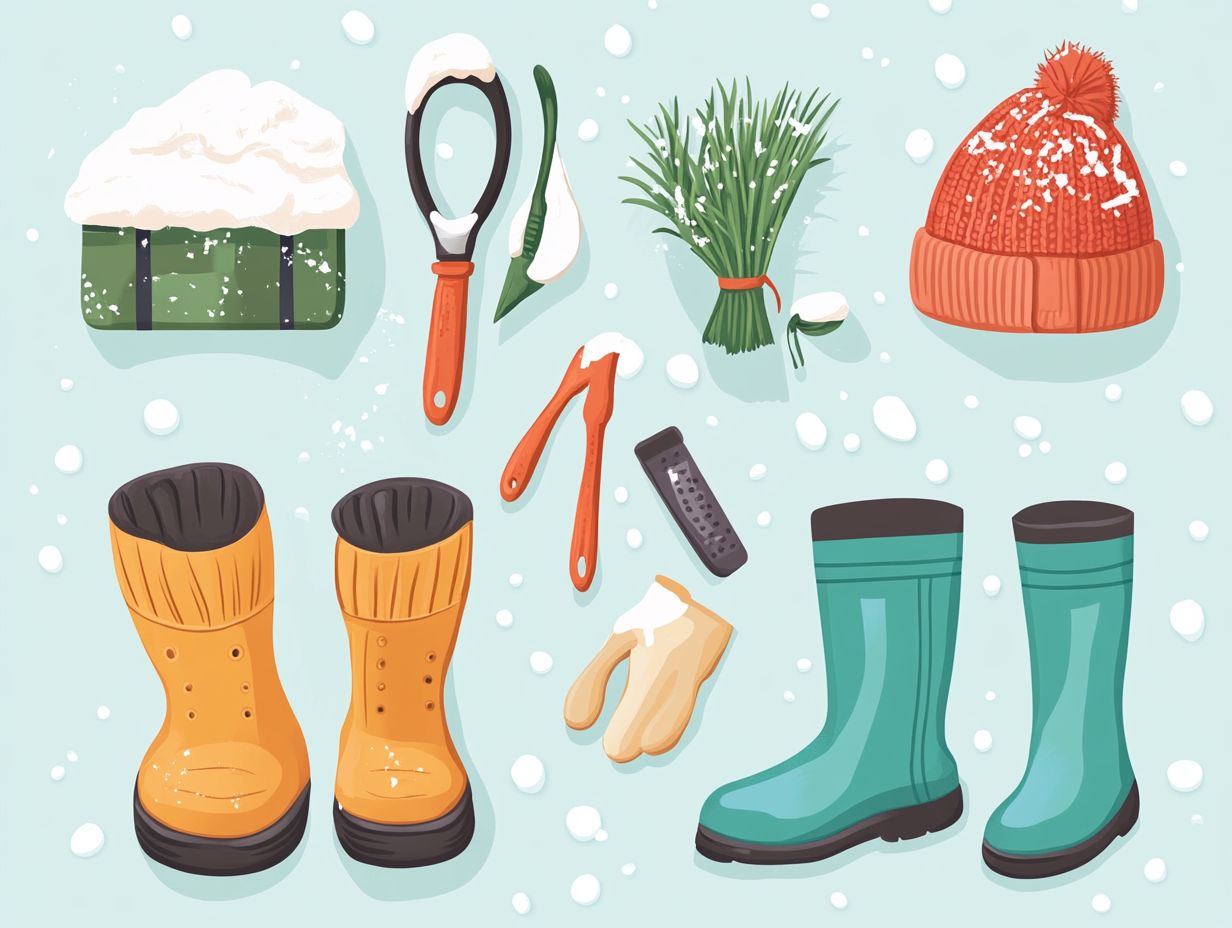
What are the top 5 accessories for cold climate gardening?
The top 5 accessories for cold climate gardening are insulated gloves, a winter hat, a kneeling pad, a snow shovel, and a greenhouse or cold frame, especially in Wyoming.
Why do I need insulated gloves for cold climate gardening?
Insulated gloves are essential for cold climate gardening. They keep your hands warm while working in the cold, preventing frostbite and ensuring you can continue gardening.
What type of winter hat should I wear while gardening in the cold?
A warm and waterproof winter hat is best for gardening in cold climates. It keeps your head and ears warm while protecting you from snow and rain, especially when tending to top cold-weather crops.
Why is a kneeling pad important for cold climate gardening?
A kneeling pad provides a barrier between your knees and the cold ground. This prevents discomfort from wetness and cold, reducing the risk of joint pain.
Do I really need a snow shovel for cold climate gardening?
Yes, a snow shovel is a must-have for cold climate gardening. It allows you to clear snow from your garden and walkways, making it easier to access and work in your garden during winter.
What is the benefit of having a greenhouse or cold frame for cold climate gardening?
A greenhouse or cold frame helps plants thrive by creating a warm, protected space. This allows you to start gardening earlier in the spring and continue later into the fall.

